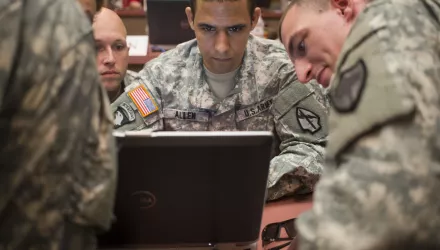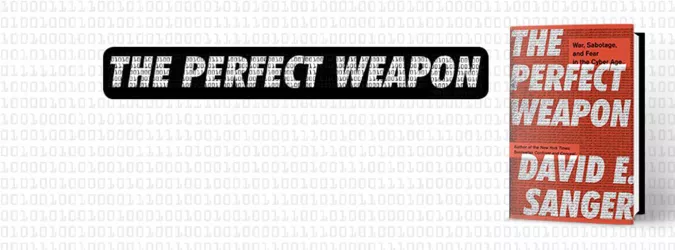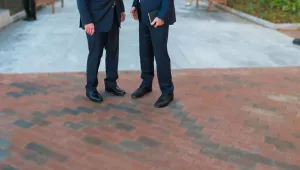
In the cyber arena, the same technologies that are creating unprecedented benefits for billions are also democratizing destruction. Graham Allison reviews ‘The Virtual Weapon and International Order’ by Lucas Kello.
Begin with a quiz. Which best describes the revolution in connectivity, communication and calculation driven by the internet and networked computers? Is it: (a) the transformative technology of our era; (b) a force that has upended the international order; or (c) the brightest shiny object in national-security studies? The answer is all of the above. And for both better and worse, Lucas Kello weaves all these strands through his ambitious book, “The Virtual Weapon and International Order.”
Mr. Kello, the director of the Centre for Technology and Global Affairs at Oxford, uses an array of case studies—from Russia’s information operations during the 2016 election and North Korea’s hacking of Sony Pictures in 2014 to the Stuxnet strike against Iran’s nuclear program a few years before—to examine cyber’s disruptive potential. His book is not a history or a narrative but a work of theory. His purpose is to explore the likely effect of cyber on the balance of power among nations and their prospects for conflict, cooperation and competition.
The book presents five core arguments. First, the cyber revolution has scrambled the international order. Second, cyber conflict among states and nonstate actors has ushered in a new international status that Mr. Kello calls “unpeace”—a “mid-spectrum rivalry lying below the physically destructive threshold of interstate violence, but whose harmful effects far surpass the tolerable level of peacetime competition.” Third, Mr. Kello contends, because of difficulties in attributing attacks, traditional concepts of statecraft like deterrence are not adequate for addressing cyber threats. Fourth, a chasm divides scholars from policymakers in this realm. And, finally, academics have not adequately explored the ways that cyber is reshaping relations among states and nonstate actors.
In “World Order” (2014), Henry Kissinger notes, “When individuals of ambiguous affiliation are capable of undertaking actions of increasing ambition and intrusiveness, the very definition of state authority may turn ambiguous.” Note Mr. Kissinger’s careful use of “when” and “may.” Mr. Kello’s book would have been more persuasive had he followed this example by making his claims more conditional. The book’s list of horrible “coulds” is long: Individuals or small groups could take down the entire U.S. electrical grid, could incapacitate Trident nuclear-submarine fleets or could convulse the banking industry. But the list of horrible “haves” is short. While the future remains uncertain, regarding the here-and-now the best he can do is to caution, “Perhaps in no other arena of modern conflict is the gulf between the visible and the conceivable universes so wide.”
That said, Mr. Kello does remind us of an ugly truth. In cyber as in other arenas, the same technological advances that are creating unprecedented benefits for billions are also democratizing destruction. As we saw on Sept. 11, 2001, even 20th-century technologies can empower evil actors to kill on a scale that was previously the sole preserve of nations. The newly drafted 2018 Nuclear Posture Review recognizes cyber alongside biological and chemical as threats that could warrant a nuclear response. Mr. Kello thus is right to sound an alarm about the reluctance of foreign-policy thinkers to stretch their imaginations to keep pace with technology.
I second his call for a “Congress of Disciplines” that would include not just technologists, policy analysts and political scientists but also lawyers and even philosophers. In the 1950s and ’60s, thinkers we now revere as the “Wizards of Armageddon” created the conceptual arsenal for strategy and arms control in the nuclear age. Their efforts informed an approach to statecraft that has allowed us seven decades since Hiroshima in which nuclear weapons have not been used in war. This generation of strategic thinkers has an opportunity—and a duty—to step up.
But I am also acutely aware of the pitfalls in assessing new technologies. From nuclear and cyber to genomics and nano and beyond, the key issue is relative danger. When compared with a nuclear war that could extinguish all human life, a single terrorist nuclear bomb that could devastate the heart of a great city, or a biological pathogen that could kill hundreds of thousands, how dangerous should cyber threats be considered? Hyperbolic claims—like the author’s assertion that equating the effect of cyber on international affairs to that of nuclear weapons actually “inflates the relative significance of the atom bomb”—only encourage skepticism.
Computers and the internet have immeasurably changed the ways we communicate. Stealing other nations’ secrets has become much easier because spymasters can download terabytes rather than insert an agent. But how much effect has this “revolution” really had on international organizations like the United Nations, or on diplomacy of the sort we see for any issue on the front page today? For a telling test, consider the most urgent national-security challenge on the agenda: North Korea’s nuclear advance. To stop that regime from acquiring the ability to strike the American homeland with nuclear weapons, President Trump is threatening to bomb the country—even though a pre-emptive attack risks triggering a second Korean War. One can be certain America’s cyber warriors already have been charged to do their maximum. So it’s showtime. Yet over the past year, the pace of successful North Korean nuclear and ICBM tests has not only not slowed, it has accelerated.
This book’s most provocative idea is a suggestion that, as a result of the cyber revolution, “Information is no longer just a source of power; it has become force itself.” Russia’s interference in America’s election could be a harbinger of this new era. About this possibility, Mr. Kello says just enough to pique our curiosity. His work represents an important step toward bridging the gap between academic thinking about international relations and the cyber revolution in the real world. We can hope his courage, audacity and clarion call will inspire others to follow.
Allison, Graham. “Review: An Uneasy Unpeace.” The Wall Street Journal, January 21, 2018
The full text of this publication is available via The Wall Street Journal.





